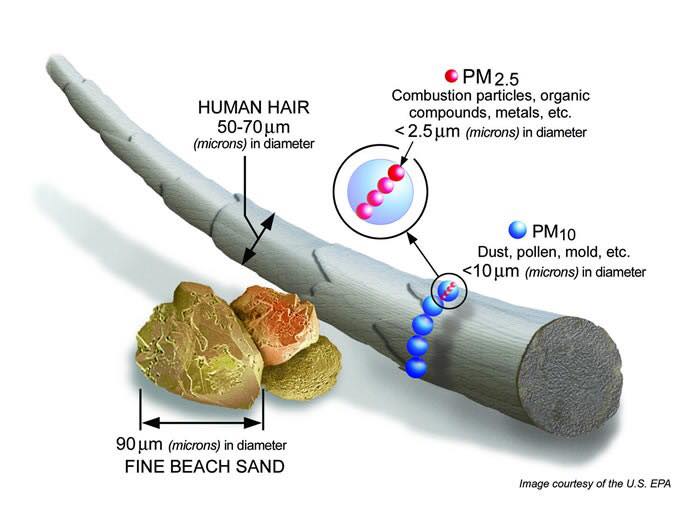Particle Pollution
This page is a part of our series on each of the criteria air pollutants. Click here to learn more about air quality and air pollutants.
The size of particles is directly linked to their potential for causing health problems. EPA is concerned about particles that are 10 micrometers in diameter or smaller because those are the particles that generally pass through the throat and nose and enter the lungs. Once inhaled, these particles can affect the heart and lungs and cause serious health effects.

EPA groups particle pollution into categories:
- PM10, aka, “inhalable coarse particles,” such as those found near roadways and dusty industries, are larger than 2.5 micrometers (µm) and smaller than 10 µm in diameter.
- PM2.5, aka, “fine particles,” is that which is found in smoke and haze. These particles are 2.5 µm in diameter and smaller. PM2.5 can be directly emitted from sources such as forest fires, or they can form when gases emitted from power plants, industries and automobiles react in the air.
- PM0.1, better known as “ultrafine particulate matter,” are particles smaller than 0.1 µm in diameter. Ultrafine dust can cause major damage to human health — posing a risk to the body’s cardiovascular, respiratory, and neurological systems. Emerging evidence suggests that PM0.1 may be even more harmful to our health than PM2.5.
Although there are regulatory limits set for course and fine particle pollution, researchers have not found a “safe” level of exposure. In other words, even briefly breathing in particulate matter can cause health problems. To reduce the health impact for those living in areas with particle pollution problems, EPA established two separate numerical standards for short term and long term particle pollution. These standards determine the maximum allowable concentrations of particle pollution. The annual standard is based on particle pollution concentrations measured over 365. The daily standard is based on the average particle pollution concentrations over a 24 hour period. For both standards, regulators average air quality monitor data form the most recent three years to determine if there has been a violation of the allowable levels.

